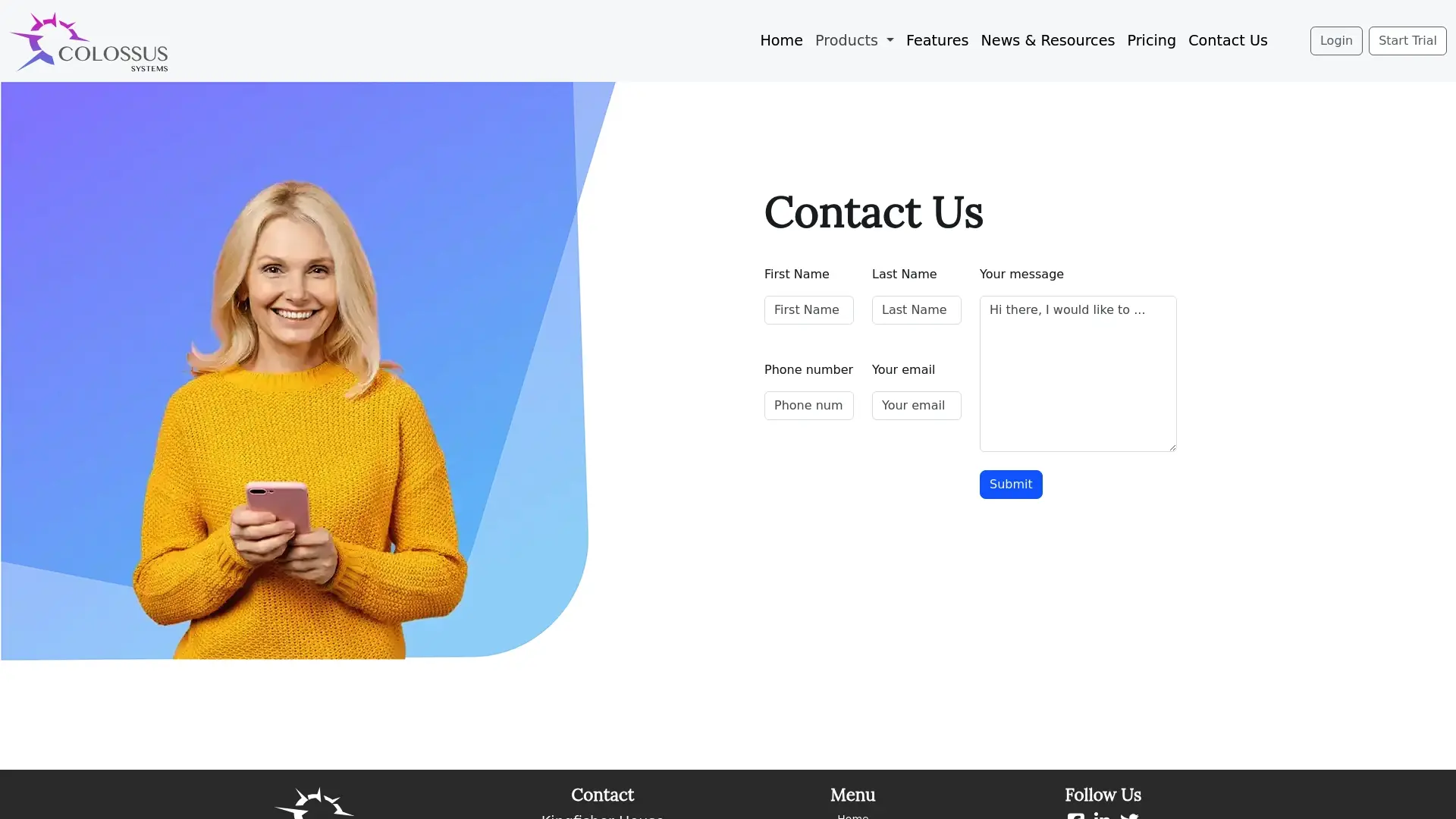Membership Management Database: Complete Guide for 2025

Over 70 percent of organisations struggle with managing dispersed member data, which often leads to communication gaps and missed opportunities. Efficient membership management is the backbone of strong relationships and sustainable growth for clubs, nonprofits, and associations. By embracing innovative digital solutions, organisations can centralise information, automate workflows, and gain vital insights that shape their approach to member engagement and long-term success.
Table of Contents
- Defining Membership Management Databases
- Core Features And Functionalities Explained
- Types And Deployment Models Compared
- Integration With Engagement And Payment Systems
- Security, Data Privacy, And Compliance Essentials
- Best Practices And Common Pitfalls To Avoid
Key Takeaways
| Point | Details |
|---|---|
| Centralized Member Information | Membership management databases create a single repository for member data, enhancing operational efficiency and streamlining administrative processes. |
| Actionable Insights | These systems allow organizations to analyze member behavior, predict retention risks, and personalize communications to improve engagement and satisfaction. |
| Diverse Deployment Models | Options range from cloud-based, on-premise, to hybrid solutions, allowing organizations to choose based on their specific needs and security requirements. |
| Robust Security Practices | Implementing strong data protection strategies and compliance measures is critical for maintaining member trust and safeguarding sensitive information. |
Defining Membership Management Databases
A membership management database is a specialised digital system designed to centralise and streamline member information, communications, and organisational processes. According to research from Raklet, these databases eliminate dispersed records by creating a single, consistent repository of member data that enables organisations to operate more efficiently.
The core function of membership databases extends far beyond simple record-keeping. They serve as comprehensive platforms that automate critical organisational workflows such as:
- Member profile management
- Renewal tracking and processing
- Communication segmentation
- Payment history documentation
- Engagement monitoring
Modern membership databases transform raw member data into actionable insights. Our membership database article highlights how these systems help organisations understand member behaviour, predict retention risks, and personalise interactions. By consolidating contact details, demographic information, participation history, and communication preferences, these databases become powerful strategic tools for membership-driven organisations.
At their essence, membership management databases are not just technological solutions but strategic assets. They enable organisations to move from reactive administrative processes to proactive, data-driven engagement strategies that can significantly enhance member satisfaction and organisational growth.
Core Features and Functionalities Explained
Membership management databases are sophisticated platforms packed with powerful features designed to transform organisational operations. Understanding membership management software reveals a comprehensive suite of functionalities that go far beyond basic record storage.
The core features of modern membership management databases typically include:
- Centralized Member Database: A single source of truth for all member information
- Automated Workflow Management: Streamlining renewals, communications, and administrative tasks
- Advanced Reporting Tools: Generating insights through detailed analytics
- Communication Segmentation: Personalised outreach capabilities
- Secure Member Interaction Platforms: Protecting sensitive member data
- Integration Capabilities: Connecting with other organisational systems
These databases are not just technological tools but strategic assets that enable organisations to understand and engage their members more effectively. By consolidating demographic information, participation history, communication preferences, and interaction data, they provide a holistic view of membership dynamics.
The real power of these systems lies in their ability to transform raw data into actionable intelligence. They help organisations predict member behaviour, identify potential retention risks, and create targeted engagement strategies that can significantly enhance member satisfaction and organisational growth.

Types and Deployment Models Compared
Membership management databases come in diverse deployment models, each designed to meet different organisational needs and capabilities. According to research from JoinIT, these solutions range from free, open-source platforms for small organisations to comprehensive paid systems for large associations.
The primary deployment models can be categorised into three key types:
Here’s a comparison of the main deployment models for membership management databases:
| Deployment Model | Key Advantages | Key Considerations |
|---|---|---|
| Cloud-Based | High accessibility Automatic updates Lower upfront cost |
Relies on internet Potential external data storage |
| On-Premise | Full data control Customisation possible Enhanced security |
Higher setup costs Requires IT infrastructure |
| Hybrid | Flexibility Balanced security & access |
Complexity in management Varied costs |
-
Cloud-Based Solutions:
- Offer maximum accessibility
- Provide automatic updates
- Scalable infrastructure
- Lower upfront infrastructure costs
-
On-Premise Systems:
- Provide complete data control
- Higher customization potential
- Enhanced security for sensitive information
- Require internal IT infrastructure
-
Hybrid Deployment Models:
- Combination of cloud and on-premise technologies
- Flexible data management
- Balanced approach to security and accessibility
Member Management Software highlights that modern organisations increasingly prefer cloud-based solutions due to their flexibility and cost-effectiveness. These systems allow seamless remote access, real-time collaboration, and automatic data synchronisation across multiple platforms and devices.
Ultimately, the choice between deployment models depends on specific organisational requirements, budget constraints, security needs, and technological infrastructure.
Careful evaluation of these factors ensures selecting a membership management database that aligns perfectly with an organisation’s unique operational landscape.
Integration With Engagement and Payment Systems
Integration capabilities are the backbone of modern membership management databases, transforming them from simple record-keeping tools to comprehensive engagement platforms. Integrating your website into a membership CRM can dramatically enhance an organisation’s ability to communicate, process transactions, and maintain member relationships.
The key integration features typically include:
-
Communication Tools:
- Automated event notifications
- Personalised email campaigns
- SMS and push notification capabilities
- Multi-channel communication tracking
-
Payment System Integrations:
- Secure online payment gateways
- Automated membership renewal processing
- Multiple payment method support
- Real-time transaction tracking
- Financial reporting and reconciliation
According to research from Raklet, these databases now include sophisticated communication tools for notifying members about events and updates while simultaneously managing financial transactions efficiently.
The true power of integrated systems lies in their ability to create a seamless, connected experience for members. By breaking down technological silos, organisations can create more responsive, personalised interactions that not only streamline administrative processes but also significantly enhance member satisfaction and engagement.
Security, Data Privacy, and Compliance Essentials
Data security has become paramount in membership management databases, with organisations facing increasingly complex regulatory landscapes. Understanding online payment security reveals the critical importance of implementing robust protection mechanisms that safeguard sensitive member information.
Key security and compliance considerations include:
-
Data Protection Strategies:
- Encryption of sensitive member data
- Regular security audits
- Multi-factor authentication
- Comprehensive access control systems
- Secure data transmission protocols
-
Compliance Requirements:
- GDPR adherence
- Data minimisation principles
- Transparent data usage policies
- Regular consent management
- Documented data handling procedures
According to research from Raklet, secure member data storage aids in compliance with data protection laws, ensuring organisational accountability and maintaining member trust. This goes beyond mere technological implementation to creating a comprehensive culture of data responsibility.
The most effective membership databases now integrate security not as an afterthought, but as a fundamental design principle. By prioritising member data protection, organisations can build trust, mitigate risks, and demonstrate their commitment to ethical data management in an increasingly complex digital landscape.
Best Practices and Common Pitfalls to Avoid
Membership database management requires a strategic approach to maximise efficiency and minimise potential risks. Member Management Software emphasises the importance of understanding both best practices and potential challenges in database implementation.
Best practices for effective membership database management include:
-
Data Management:
- Regular data cleaning and validation
- Consistent data entry standards
- Comprehensive member profile updates
- Automated duplicate detection
- Periodic data reconciliation
-
Common Pitfalls to Avoid:
- Manual data entry and tracking
- Inconsistent record keeping
- Neglecting data privacy protocols
- Overlooking system integration needs
- Failing to train staff on database usage
According to research from Synapse India, automating membership processes reduces manual errors and improves efficiency. This allows staff to redirect their energy towards strategic initiatives like member recruitment and engagement, rather than getting bogged down in administrative tasks.
The key is to view your membership database as a dynamic, living system. By implementing robust practices, continuously training your team, and remaining adaptable to technological changes, organisations can transform their database from a mere record-keeping tool to a powerful strategic asset that drives member satisfaction and organisational growth.
Unlock the Full Potential of Your Membership Management Database Today
The challenge of managing scattered member data and navigating complex workflows is very real. As highlighted in the “Membership Management Database: Complete Guide for 2025”, organisations often struggle with outdated manual processes, fragmented communication, and inefficient renewal tracking. These pain points can limit growth and member satisfaction. Colossus Systems understands these hurdles and offers a streamlined SaaS platform designed to centralise and automate your entire member management journey while enhancing engagement through tailored communications, secure payment integration, and advanced analytics.

Experience the difference of a platform that transforms your membership database into a strategic tool for growth. Whether you are looking to simplify event registrations, personalise marketing campaigns, or securely handle transactions, our fully customisable solution is built with your needs in mind. Don’t let fragmented systems hold back your organisation. Act now to elevate your membership management by reaching out through contact us and discover how Member Management Software and Membership Database insights come to life within Colossus Systems.
Frequently Asked Questions
What is a membership management database?
A membership management database is a digital system designed to centralise and streamline member information, communications, and organisational processes, allowing organisations to manage member data efficiently.
What are the core features of modern membership management databases?
Core features include a centralized member database, automated workflow management, advanced reporting tools, communication segmentation, secure interaction platforms, and integration capabilities with other systems.
What are the different deployment models for membership management databases?
The primary deployment models are cloud-based, offering high accessibility; on-premise, providing full data control; and hybrid, combining both cloud and on-premise technologies for flexibility and enhanced security.
How do membership management databases enhance member engagement?
These databases use integration capabilities to automate communication tools and payment systems, creating a seamless experience that enhances member interactions and boosts satisfaction.